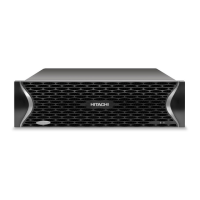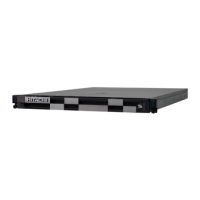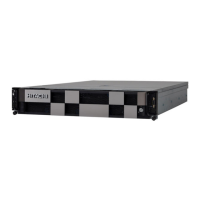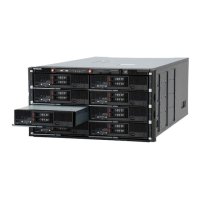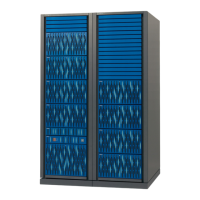
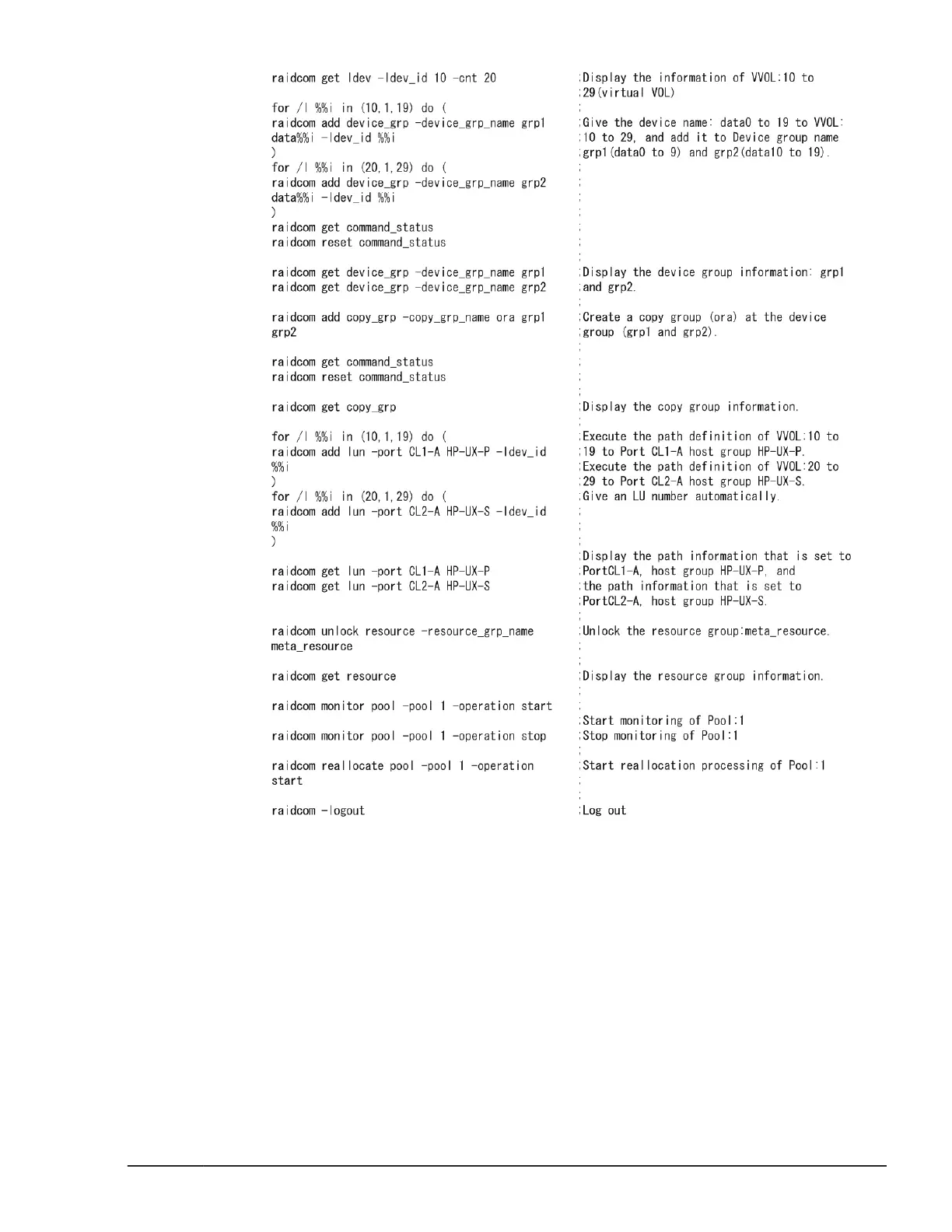 Loading...
Loading...
Do you have a question about the Hitachi VSP F1500 and is the answer not in the manual?
Describes the target audience for this document, outlining the expected familiarity with data processing and storage systems.
Specifies the Command Control Interface software version this document revision applies to.
Provides information on where to find CCI release notes, which may contain requirements or corrections.
Details the modifications and additions made in the current revision of the document.
Lists related documentation and manuals for further information on Hitachi storage systems and software.
Explains terminology and typographic conventions used throughout the document for clarity and consistency.
Defines the units and calculation methods for physical and logical storage capacity values used in the document.
Guides users on how to access the most current product documentation and updates.
Provides contact information and resources for technical support and online communities.
Instructs users on how to submit feedback and comments regarding the document.
Introduces the Command Control Interface (CCI) software and its role in storage system configuration and data management.
Details the functionalities provided by CCI, including replication, data protection, and provisioning operations.
Lists the CCI functionalities that are common across all supported Hitachi Data Systems RAID storage systems.
Describes CCI's command-line control for local replication operations like ShadowImage, Thin Image, and Copy-on-Write Snapshot.
Explains CCI's command-line control for remote replication operations, including TrueCopy, Universal Replicator, and global-active device.
Details CCI's support for data protection operations, including Database Validator and Data Retention Utility.
Describes the CCI software environment, including components on hosts and storage systems.
Explains the CCI components residing on the RAID storage system, focusing on the command device.
Details the components of a CCI instance on a host server, including HORCM operational environment.
Explains the basic unit of CCI software structure and its possible configurations.
Discusses host machines that can be paired for operations, considering CCI version and OS platform compatibility.
Describes the configuration definition file, which defines a CCI instance and its connected hosts, volumes, and groups.
Details the settings within the configuration definition file, including HORCM_MON, HORCM_CMD, and HORCM_DEV parameters.
Explains ShadowImage operations and configurations, including duplicated mirroring and cascading pairs.
Describes how cascading connections for TrueCopy and ShadowImage can be set up using configuration definition files.
Lists and describes CCI files supplied with the software, log files, and user-created files.
Explains the CCI log and trace files, including their storage locations and purposes for troubleshooting.
Describes user-created files, such as CCI scripts, used for automated and unattended copy operations.
Explains the use of environment variables when HORCM or commands are invoked.
Describes system configurations using in-band and out-of-band methods, including connecting to an in-band CCI server via out-of-band.
Explains how to connect to a CCI server using the out-of-band method, specifying CCI server ports as virtual command devices.
Details the hardware requirements for CCI, including SCSI path through driver and platform support.
Explains how CCI allows user authentication using operation authority and the mandatory nature of user authentication for configuration and out-of-band operations.
Describes how CCI executes commands based on user operation authority and enables user authentication.
Explains how operation for resource groups differs based on command devices used and the relationship between users, command devices, and resource groups.
Describes the resource lock command to prevent multiple users from changing the same resource configuration simultaneously.
Explains the two modes for executing configuration setting commands: Line-by-line and Transaction mode, including available checks.
Details MP blade names and parameters for VSP G1000, G1500, VSP F1500, VSP Gx00, and VSP Fx00 models.
Explains how CCI enables grouping of multiple LDEVs through device group and copy group functions.
Describes how to create pairs with mainframe LDEVs using CCI, noting limitations on replication functions.
Explains how global storage virtualization minimizes configuration file rewrites when operating migrated volumes.
Provides instructions for starting up one or two instances of CCI on UNIX systems.
Provides instructions for starting up one or two instances of CCI on Windows systems.
Provides instructions for starting up one or two instances of CCI on OpenVMS systems.
Explains how to start CCI as a service in Windows systems using the svcexe.exe command and sample script files.
Introduces provisioning operations that can be performed on Hitachi storage systems using CCI.
Lists the provisioning operations that can be performed using CCI.
Details provisioning operations executable by specifying a device group, enabling operations on all LDEVs in the group simultaneously.
Outlines the order of operations for provisioning, including logging in, locking resources, and viewing group information.
Describes how to create and delete resource groups, and display resource group information.
Explains operations for creating internal open-systems and mainframe volumes, including LDEV creation and configuration.
Details the provisioning operations for creating virtual volumes (Dynamic Provisioning) and making LDEVs available to hosts.
Describes provisioning operations for creating virtual volumes (Dynamic Provisioning for Mainframe) and making LDEVs available to hosts.
Explains the operational flow for using virtual volumes (Dynamic Tiering), including pool creation and performance monitoring.
Guides on enabling/disabling iSCSI virtual port mode and setting/deleting virtual port numbers for iSCSI ports.
Details operations for creating external volumes via Fibre Channel and iSCSI, including mapping and modification.
Explains how Virtual Partition Manager operations within CCI include migrating LDEVs, parity groups, and external volume groups.
Describes how Server Priority Manager prioritizes host I/O operations for high-speed processing.
Explains operations for creating host groups, adding LDEVs, and removing resources from a virtual storage machine.
Provides an overview of data replication features in RAID storage systems, including local and remote replication.
Explains how paired logical volumes are handled by replication functions and managed by servers.
Describes how to perform ShadowImage and TrueCopy operations using CCI commands for nondisruptive volume backup.
Explains how to perform Hitachi Thin Image operations using raidcom commands to store snapshots.
Details the use of CCI for global-active device operations, requiring CCI command devices and configuration files.
Provides details on ShadowImage configuration, requirements, and functions like pair creation, splitting, and resynchronization.
Explains how CCI TrueCopy commands operate with UNIX/PC servers and RAID storage systems for failover and backup.
Covers operations for TrueCopy, ShadowImage, and Universal Replicator, including volume pair management and status.
Describes Copy-on-Write Snapshot operations, including virtual volume mapping and snapshot creation.
Explains how to control Volume Migration using CLI, including compatibility considerations and command specifications.
Details Universal Replicator MxN configuration and control, including timestamps and journal data arbitration.
Outlines the requirements for duplicating CCI applications to ensure data consistency across multiple storage systems.
Explains how to discover remote volumes by exporting and importing volume information using inqraid and raidscan commands.
Describes CCI's data protection functions, including Data Retention Utility, Volume Retention Manager, and Database Validator.
Details how RAID storage systems set protection checking parameters for LUs through CCI and its command device.
Explains the Data Protection Facility's main operations to protect volumes and prevent wrong operations.
Provides examples of two-host and one-host configurations for data protection and protected volumes.
Describes operation authority for LUs when CMD security is enabled, outlining requirements for host connection and pair operations.
Lists commands controlled by the Data Protection Facility and explains how CCI rejects requests for non-permitted volumes.
Explains how CCI recognizes permitted volumes via the permission command and its relation to horcm.conf.
Introduces new options for security, specifically raidscan -find inst and raidscan -find verify.
Registers device file names to LDEV map tables for CCI, permitting matching volumes in protection mode.
Shows the relation between horcm.conf groups and Device_File registered in LDEV map tables.
Displays Device_File registered on the HORCM group, based on the LDEV defined in the local instance configuration definition file.
Explains the need for protection mode recognition and the role of the permission command for HORCM startup.
Details the execution of the permitted volume file registration ($HORCMPERM file) if it exists.
Specifies the default path for the $HORCMPERM file on UNIX systems.
Specifies the default path for the $HORCMPERM file on Windows systems.
Provides commands to permit all volumes on the host if no $HORCMPERM file exists.
Discusses environment variables like $HORCMPROMOD and $HORCMPERM for managing protection modes.
Explains how the $HORCMPROMOD environment variable turns protection mode ON or OFF.
Specifies the HORCM permission file name, with default paths for UNIX and Windows systems.
Explains how to find the protection mode command device using the horcctl -D command.
Explains how CCI checks facility versions for mixed storage system configurations and supports group version control.
Details how to use CCI configuration files to understand LDM volume relationships with physical volumes in Windows.
Describes special facilities for Windows systems, including signature changing and GPT disk support.
Explains how RAID storage systems define host groups in ports and allocate host LUs, supporting host group and LUN specification.
Describes how CCI SLPR security protects target volumes by defining command devices through the Virtual Partition Manager feature.
Provides general troubleshooting steps for CCI software and server issues, including checking configuration and logs.
Covers important operational notes and restrictions for CCI, including volume failure handling and coexistence with LVM mirror.
Lists system log messages, command error messages, and SSB codes with their conditions and recommended actions.
Provides guidance on contacting customer support, including information to provide for efficient problem resolution.




